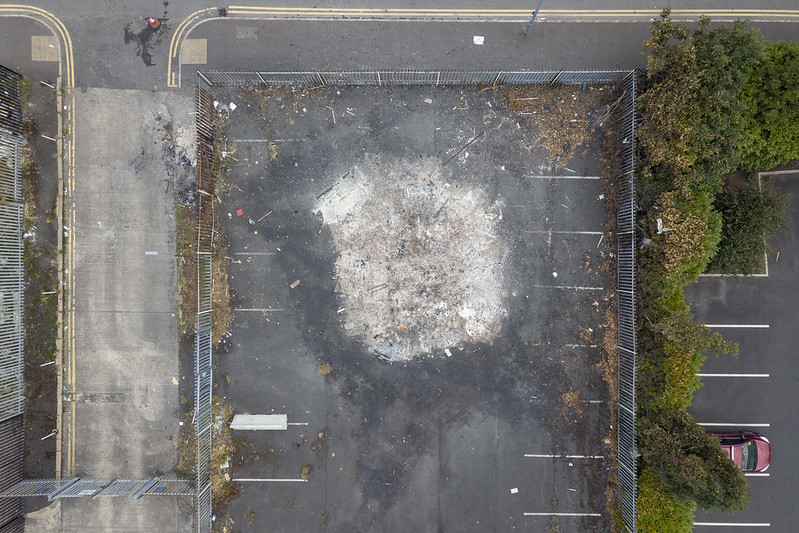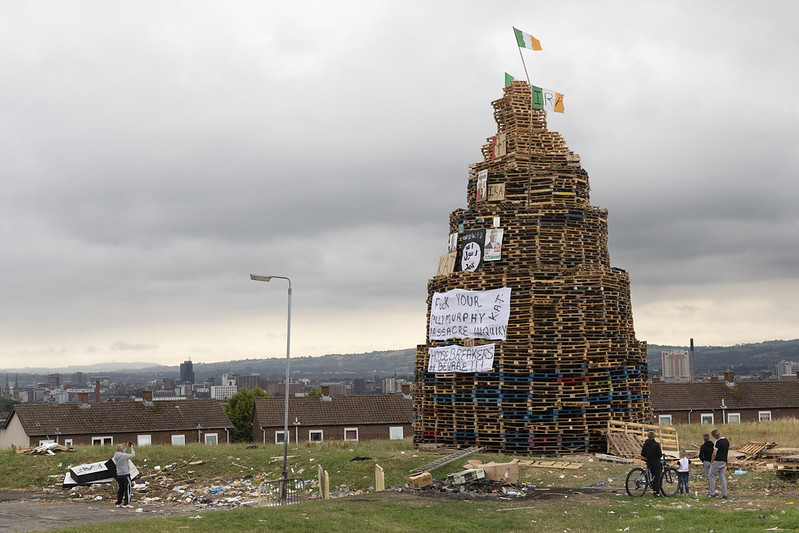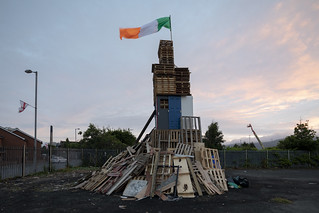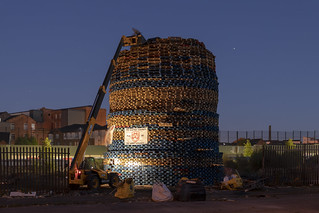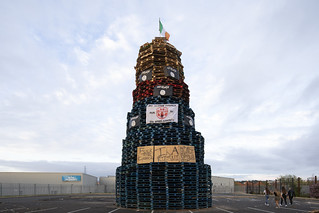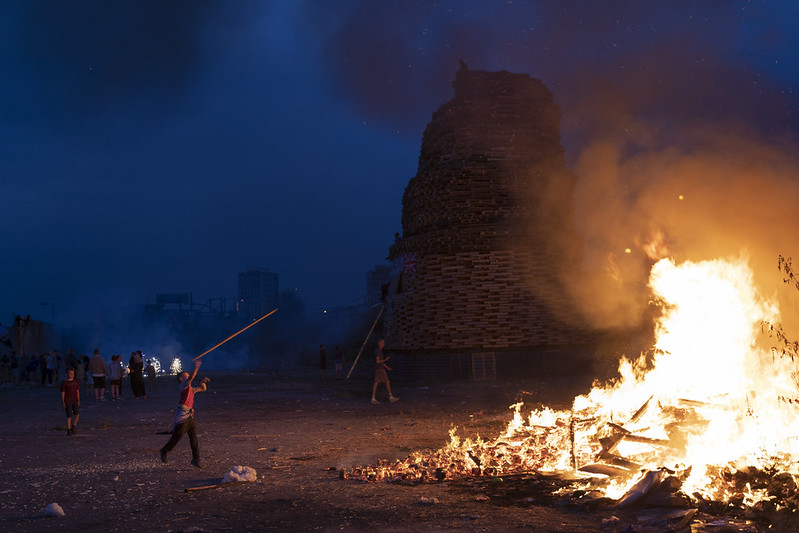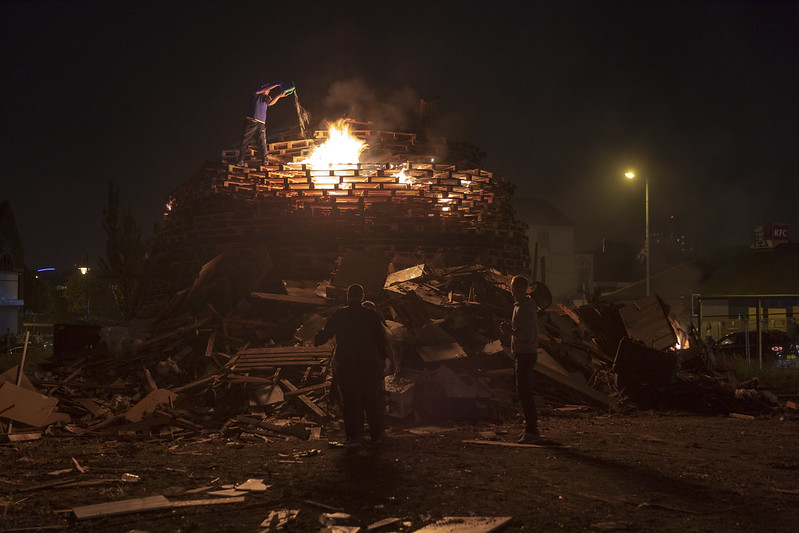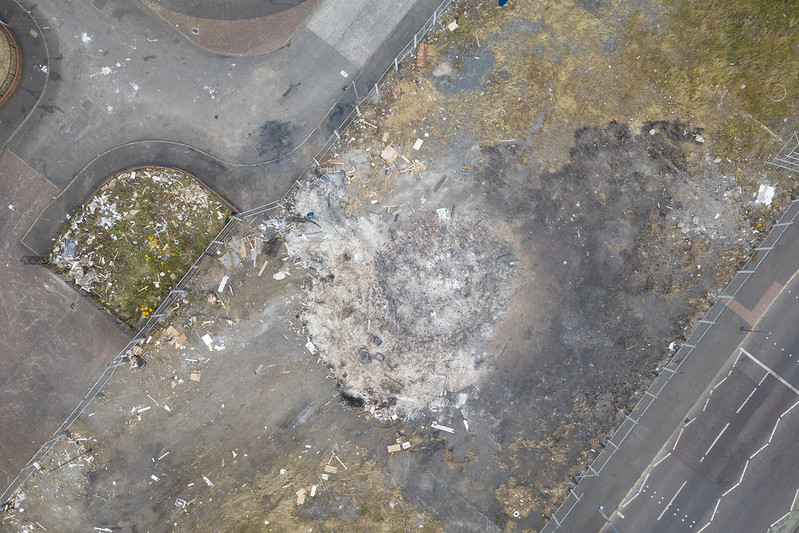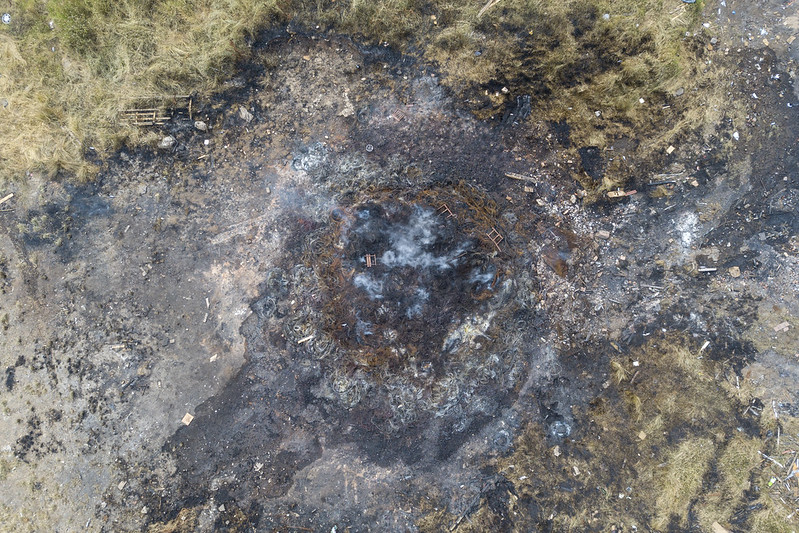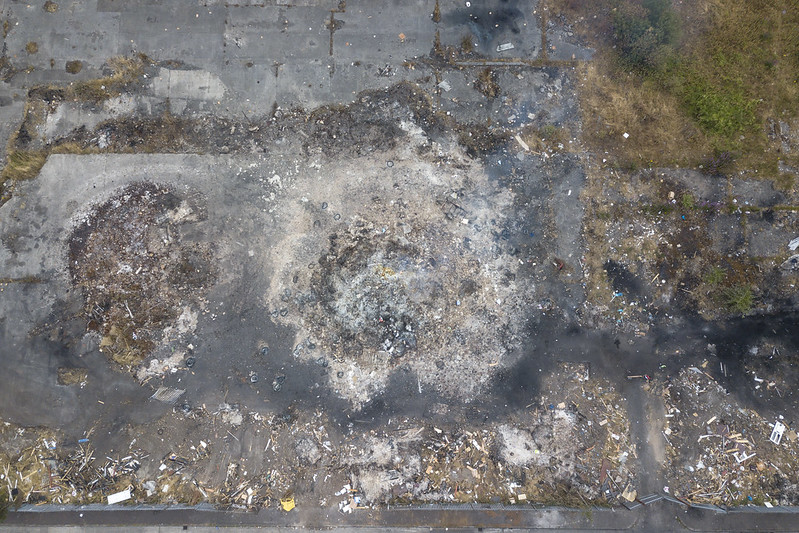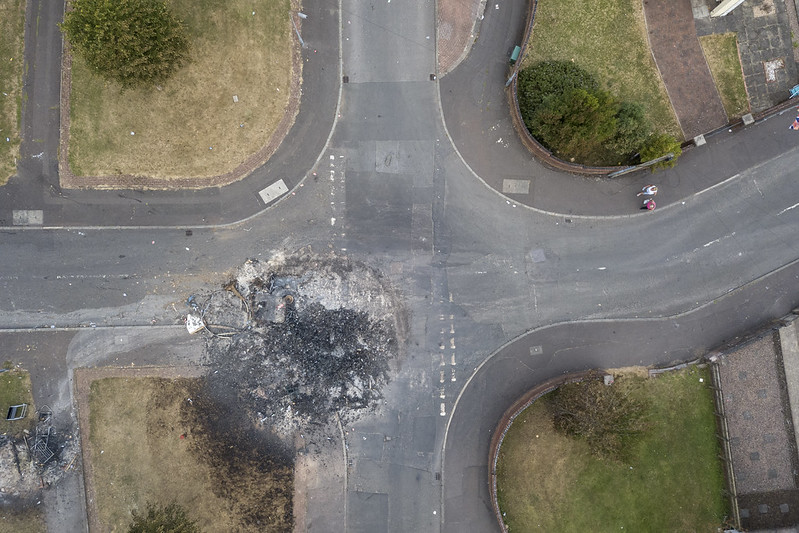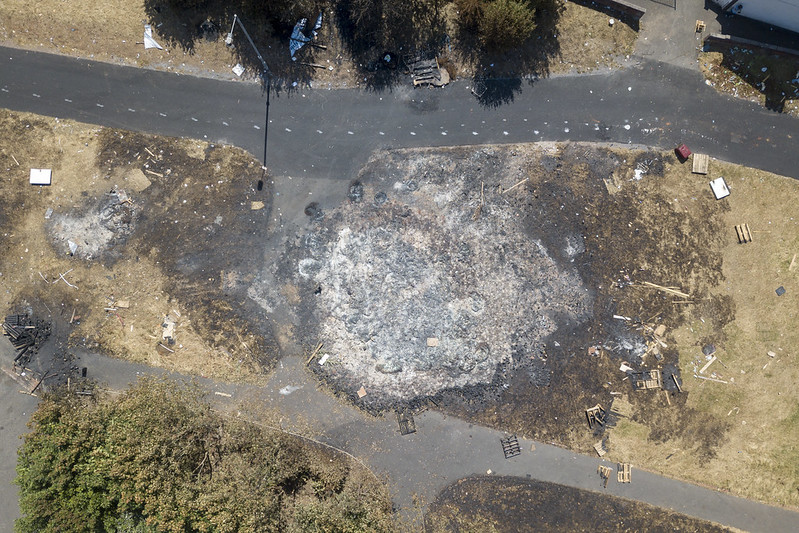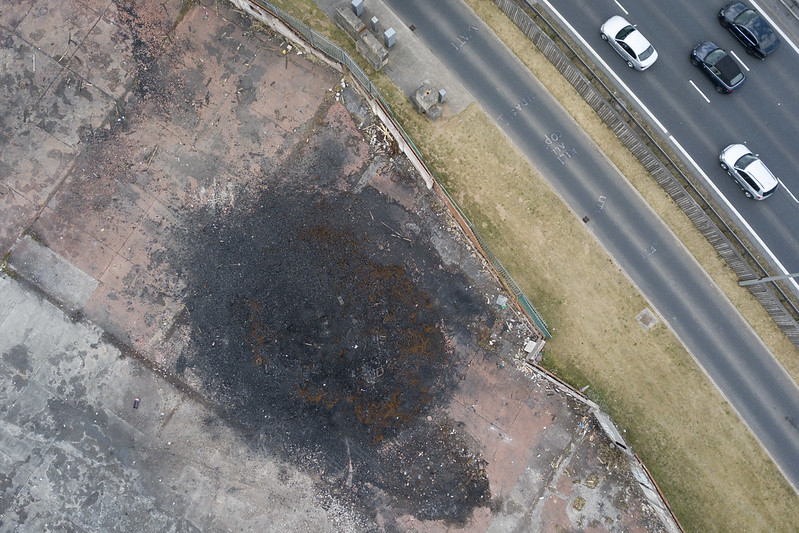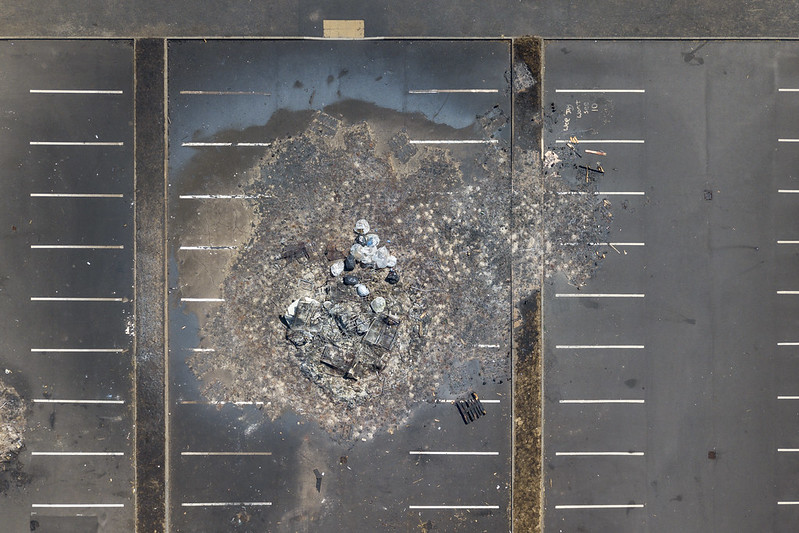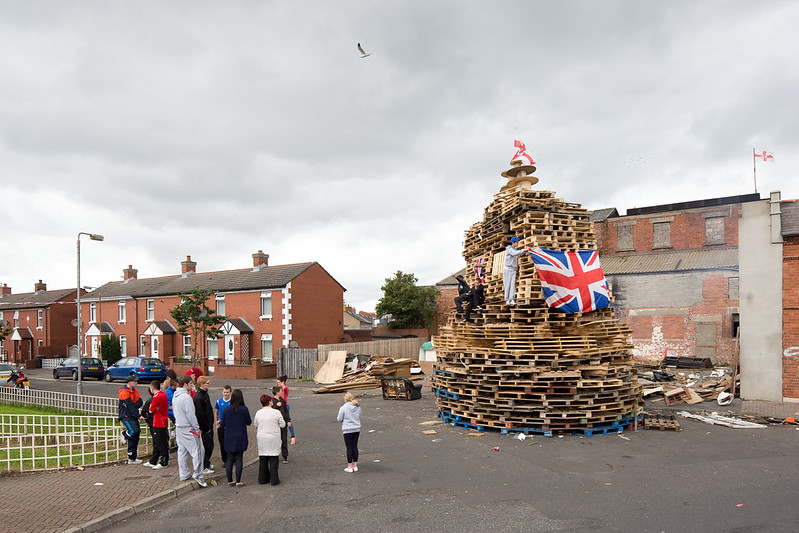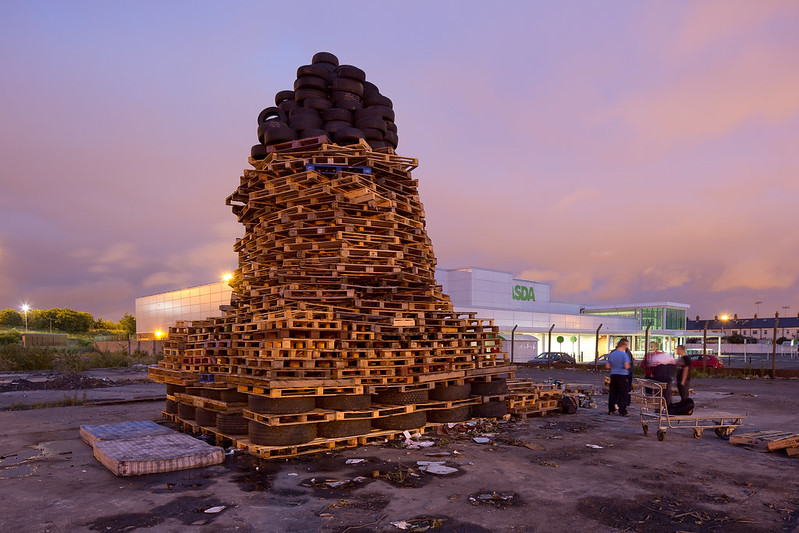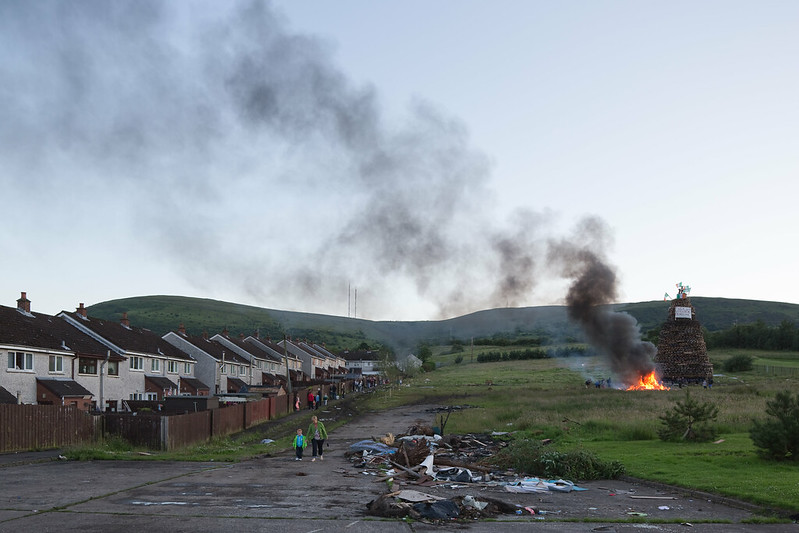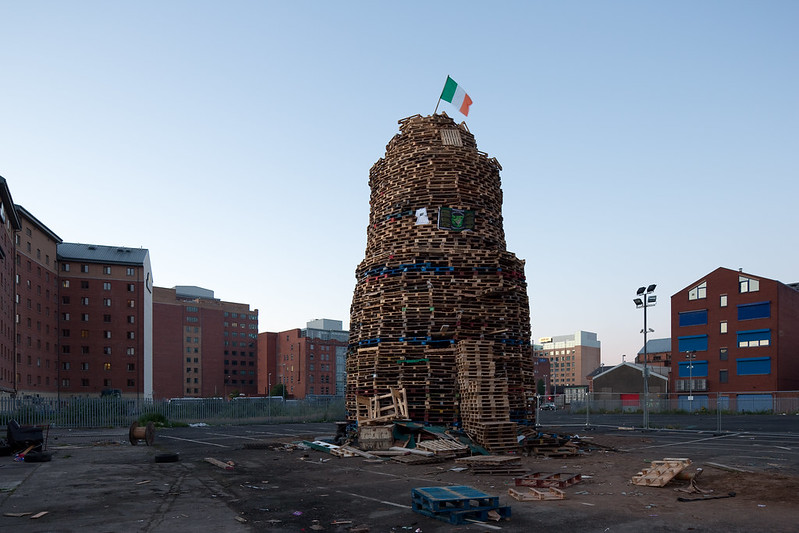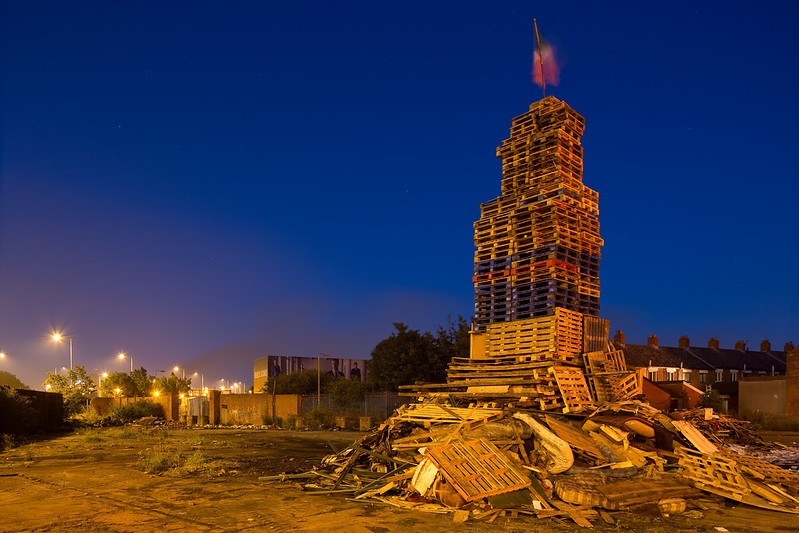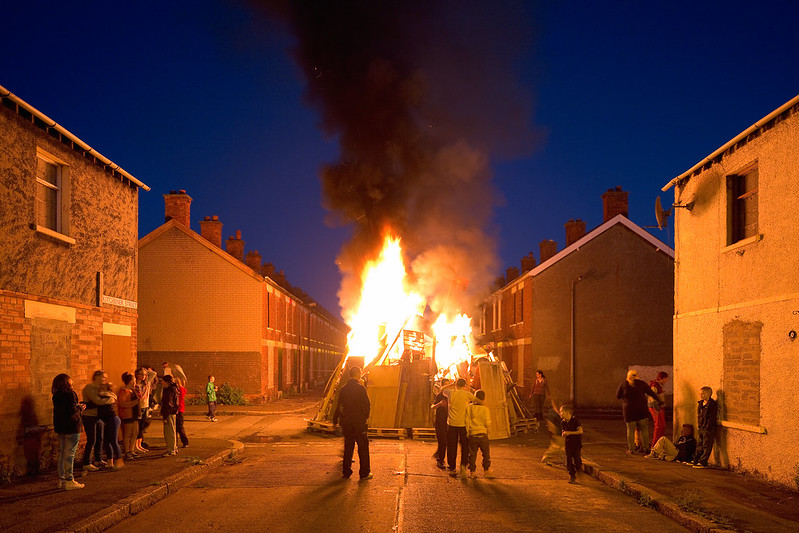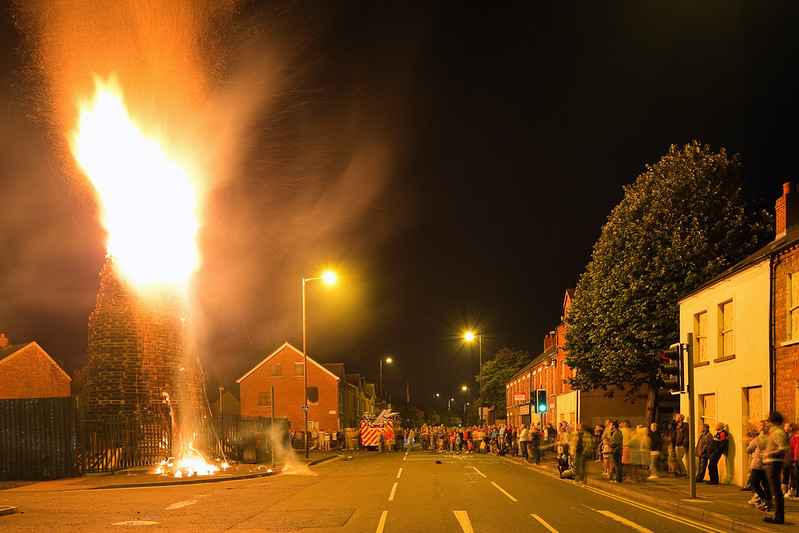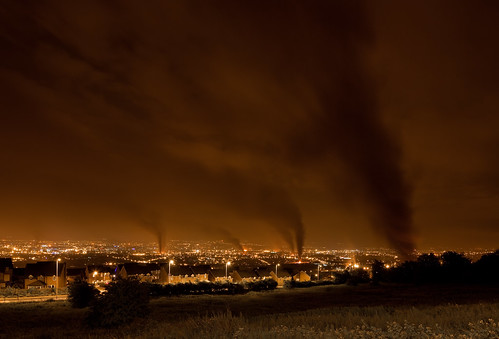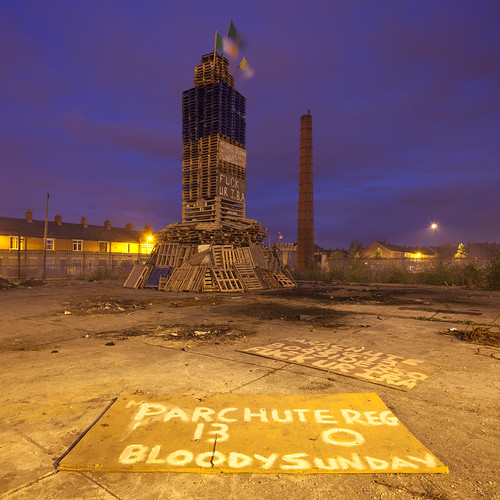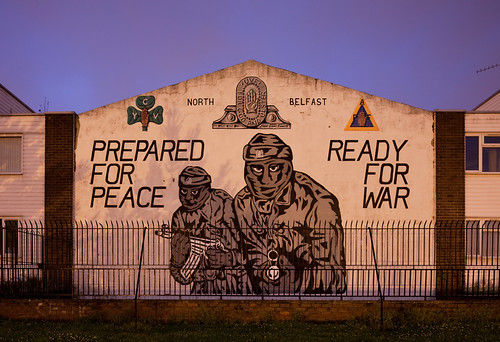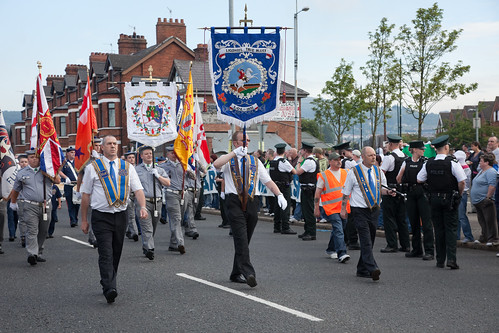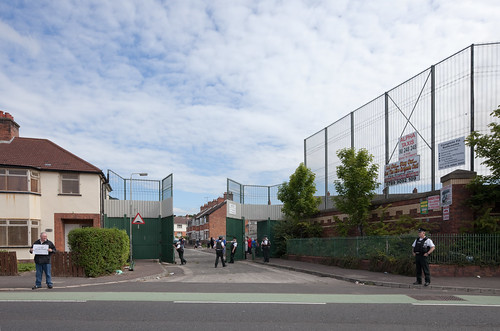Belfast, Northern Ireland’s Troubles are discussed in the past tense. After all, 2018 is the 20th anniversary of the signing of the Good Friday Agreement, and the open war that left more than 3,500 people dead has drawn to a close. But the peace building process is a long one, and commitment to peace is not universal.
Part of my long-running project in the city has been to understand how the peace process is both supported and undermined through place claiming activities, whether for an anti-sectarian youth soccer program or a Loyalist bonfire complete with an effigy of the Pope. Of course, the city’s infamous murals and peace walls demarcate neighborhoods, but so much of the conflict is more ephemeral.
This year I started a new part of the project to explore the duration of these fleeting contributions. After photographing on Eleventh Night, when loyalists burn massive bonfires to commemorate the 17th century battle that ensured the UK’s contemporary hold over Northern Ireland, I returned to the site of the bonfires a couple of days later to photograph what remained.
Below I include several 2018 bonfire images for context and then present selections from my new series. For additional photographs from the project, visit my Belfast, Northern Ireland gallery.
AFTER THE BONFIRES
